This site uses cookies as defined in our Cookie Policy, by continuing to use this site you agree to their use.
Continue
| Arrive | Depart | ||||||
| 17th17 | JulJul | 202525 | Dubrovnik, Croatia, embark on the MV Corona | ||||
Nothing can prepare you for your first sight of Dubrovnik. Lying 216 km (135 miles) southeast of Split and commanding a jaw-dropping coastal location, it is one of the world's most beautiful fortified cities. Its massive stone ramparts and fortress towers curve around a tiny harbor, enclosing graduated ridges of sun-bleached orange-tiled roofs, copper domes, and elegant bell towers. Your imagination will run wild picturing what it looked like seven centuries ago when the walls were built, without any suburbs or highways around it, just this magnificent stone city rising out of the sea.In the 7th century AD, residents of the Roman city Epidaurum (now Cavtat) fled the Avars and Slavs of the north and founded a new settlement on a small rocky island, which they named Laus, and later Ragusa. On the mainland hillside opposite the island, the Slav settlement called Dubrovnik grew up. In the 12th century the narrow channel separating the two settlements was filled in (now the main street through the Old Town, called Stradun), and Ragusa and Dubrovnik became one. The city was surrounded by defensive walls during the 13th century, and these were reinforced with towers and bastions in the late 15th century.From 1358 to 1808 the city thrived as a powerful and remarkably sophisticated independent republic, reaching its golden age during the 16th century. In 1667 many of its splendid Gothic and Renaissance buildings were destroyed by an earthquake. The defensive walls survived the disaster, and the city was rebuilt in baroque style.Dubrovnik lost its independence to Napoléon in 1808, and in 1815 passed to Austria-Hungary. During the 20th century, as part of Yugoslavia, the city became a popular tourist destination, and in 1979 it was listed as a UNESCO World Heritage Site. During the war for independence, it came under heavy siege. Thanks to careful restoration, few traces of damage remain; however, there are maps inside the Pile and Ploče Gates illustrating the points around the city where damage was done. It’s only when you experience Dubrovnik yourself that you can understand what a treasure the world nearly lost Arrival in Dubrovnik - Journey to this historic walled city. On arrival, you will be escorted to the harbour where the superb four-star MV Corona awaits. The captain and crew will welcome you aboard and help you settle into your comfortable, well-equipped cabin. For the rest of the day, it’s time to relax and get to know your fellow passengers – there are just thirty-eight of you in total! Perhaps you’ll catch some ‘rays’ on the Sun deck or take a stroll ashore. It’ll soon be time for dinner and the ship’s restaurant awaits. After dinner, why not take a stroll around Dubrovnik, or enjoy a digestif in a local bar? | |||||||
| 18th18 | JulJul | 202525 | Mljet Island, Croatia | ||||
| Mljet - As you rise refreshed in the morning and enjoy a leisurely breakfast, you’ll be so glad you chose this holiday. The MV Corona, our home for the next week and every inch the private yacht, slips out of the harbour and out to sea. Dubrovnik soon fades into the distance – but we will be back for a more in-depth visit later. It is impossible for large cruise liners to visit the charming and almost deserted hamlets accessible to the MV Corona. We arrive at Mljet, one of the most seductive of such islands, where the hillsides are clad in a green carpet of lush pine forests bringing that instantly recognisable Mediterranean aroma to the air. Nestling in picturesque coves are medieval fishing villages, refreshingly free from tasteless development, where the alleyways are simply pebbles set into the earth and overhead shutters sway precariously in the warm, gentle breezes. Life here continues much as it has for centuries. We go ashore to the tiny islet of St Mary’s and visit the 12th century former Benedictine monastery. With its colourful walls and altar carved from local stone you will already feel a long way from home. Gaze around you during dinner at one of the hospitable local restaurants and absorb the ambience. It’s easy to see why legend has it that the Greek hero Ulysses came here to contemplate. | |||||||
| 19th19 | JulJul | 202525 | Korčula, Croatia | ||||
Off the coast of Croatia in the southern Adriatic Sea lie some thousand islands and the largest of them, Korçula, is considered the most beautiful. With an average of 3,000 hours of sunshine per annum, which guarantees a wide assortment of Mediterranean vegetation, it is not difficult to understand why seasoned travelers compare Korçula to a latter-day Eden. Separated from the mainland by a channel of only one mile, Korçula's main town, named the same as the island, ranks among the best preserved medieval towns in the Mediterranean. It is the island's main tourist, economic and cultural center. Thanks to its strategic location along the sea trade routes, Korçula has always attracted travelers and settlers. Korcula was founded by Greek colonists, who were followed by Illyrians, Romans and finally the Croats. The Korçula Statute of 1214 is one of the oldest legal documents to have been adopted in this part of Europe. The same century saw the birth of the famous world traveler, Marco Polo. The house said to be his birthplace can be seen in town. Korçulans have always been known as keen seafarers, excellent shipbuilders, stonemasons and artists. From their many voyages, sailors brought back new ideas, which eventually mixed with local customs. To this day, Korçula has maintained the tradition of performing knightly games such as the chivalrous Moreska dance, which has been in existence for more than 400 years. Visitors to Korçula enjoy its stunning location, natural beauty and medieval ambiance. And if that's not enough, the town offers numerous attractions that are within walking distance from the pier, including the City Museum and the Bishop's Treasury. Pučišća - After breakfast, take to the deck to see the spectacular coast of Korčula island sliding by as we cruise northwards through this enchanting archipelago. We spend the morning sailing with a swim stop if conditions allow. Lunch will be served on board before continuing to Pucisca. This afternoon we sail to the glorious island of Brac, mooring in idyllic Pučišća. This jewel of a place, perhaps the most spectacular of Croatia’s villages, boasts dwellings of gleaming white stone reflecting the sun onto the crystal-clear water. Stroll ashore to explore this charming spot or relax on board before the superb Captain’s Dinner is served – a delicious selection of Croatian and Mediterranean specialities. | |||||||
| 20th20 | JulJul | 202525 | Brač Island, Croatia | ||||
| Split - Rise refreshed and take to the deck once more to watch the stunning coastal views slipping by. We continue north, stopping along the coastline of the stunning island of Brac for a swim stop. Lunch is served on board after which we moor in Split, Dalmatia’s capital. Split is principally famous for a single building, the Emperor Diocletian’s huge palace, one of the greatest structures of the Roman Empire. No expense was spared in its construction – the best Italian marble, with columns and sphinxes from Egypt. But what makes this palace so astonishing is that during medieval times it was fully integrated into the town’s fabric with a jumble of buildings grafted onto and inside it. This means for example, the Temple of Jupiter became a baptistry. It’s all the more fascinating that today 3,000 people still live here. You will find surprises at every turn: there are tall medieval buildings lining the streets, buttressed by unmistakably Roman columns. We have a guided walking tour of this fascinating complex which has recently been used as the setting of the TV spectacular Game of Thrones. Take dinner at your leisure whilst the ship remains moored in Split. Back on board enjoy a digestif on the sun deck, drinking in the balmy evening air under a beautiful night sky. | |||||||
| 21st21 | JulJul | 202525 | Makarska, Croatia | ||||
| Stari Grad & Hvar - This morning we’ll stop once more for an invigorating swim before we cruise to another stunning island in this breath-taking archipelago, Hvar. After lunch we moor in Stari Grad on the northern side of the island and then take the short drive by coach to the bewitching old town for a guided tour. Remarkably, it’s so compact and cosy the streets don’t even have names. With its freshwater springs, the island is unusually green, its hillsides boasting spectacular pine forests. Elsewhere you’ll find olive groves, orchards and vineyards, the aromatic pleasures of the island exemplified by the delicate fragrance of abundant lavender fields. Hvar has been inhabited since Neolithic times; later, the Ancient Greeks founded a colony here, and during the 14th-century, as the Venetian Empire extended its influence, it became a major naval base. Also on the island’s northern shores are some distinctive fortified 16th-century buildings, built to repel pirates and assaults by the Ottoman Empire. After exploring Hvar’s agricultural, historical and cultural splendours, we transfer back to Stari Grad where you can dine at leisure wherever you wish. The ship remains moored in Stari Grad overnight. | |||||||
| 22nd22 | JulJul | 202525 | Korčula, Croatia | ||||
Off the coast of Croatia in the southern Adriatic Sea lie some thousand islands and the largest of them, Korçula, is considered the most beautiful. With an average of 3,000 hours of sunshine per annum, which guarantees a wide assortment of Mediterranean vegetation, it is not difficult to understand why seasoned travelers compare Korçula to a latter-day Eden. Separated from the mainland by a channel of only one mile, Korçula's main town, named the same as the island, ranks among the best preserved medieval towns in the Mediterranean. It is the island's main tourist, economic and cultural center. Thanks to its strategic location along the sea trade routes, Korçula has always attracted travelers and settlers. Korcula was founded by Greek colonists, who were followed by Illyrians, Romans and finally the Croats. The Korçula Statute of 1214 is one of the oldest legal documents to have been adopted in this part of Europe. The same century saw the birth of the famous world traveler, Marco Polo. The house said to be his birthplace can be seen in town. Korçulans have always been known as keen seafarers, excellent shipbuilders, stonemasons and artists. From their many voyages, sailors brought back new ideas, which eventually mixed with local customs. To this day, Korçula has maintained the tradition of performing knightly games such as the chivalrous Moreska dance, which has been in existence for more than 400 years. Visitors to Korçula enjoy its stunning location, natural beauty and medieval ambiance. And if that's not enough, the town offers numerous attractions that are within walking distance from the pier, including the City Museum and the Bishop's Treasury. Korčula - Morning breaks and we find ourselves breakfasting over more stunning views of this most spectacular coastline. After a leisurely morning with yet another chance for a swim in a sheltered bay, and a tasty lunch on board, we soon arrive at the historic town of Korčula. Ruled by the Venetians for 800 years, it is rather reminiscent of a much smaller Dubrovnik, with its host of tangled lanes so typical of medieval Mediterranean ports. The town is a charming small fortress, celebrated for supplying timber for the wooden walls of Venice and its harbour was a major shelter for the Venetian fleet. You’ll find architectural gems at every turn in its narrow-cobbled streets. Famous for its artistic and musical traditions, Korčula has its own unique sword dance, the ‘moreska’, and a form of a-capella singing, but is much more famous as the birthplace of the explorer Marco Polo. His house can still be visited, as can the All-Saints Museum with its glorious collection of Byzantine icons. After our guided walking tour, you are free to explore this beautiful town further. After dinner at your leisure, why not take an after-dinner drink in one of the innumerable harbour side cafés whilst admiring the sleek lines of the MV Corona. | |||||||
| 23rd23 | JulJul | 202525 | Dubrovnik, Croatia | ||||
Nothing can prepare you for your first sight of Dubrovnik. Lying 216 km (135 miles) southeast of Split and commanding a jaw-dropping coastal location, it is one of the world's most beautiful fortified cities. Its massive stone ramparts and fortress towers curve around a tiny harbor, enclosing graduated ridges of sun-bleached orange-tiled roofs, copper domes, and elegant bell towers. Your imagination will run wild picturing what it looked like seven centuries ago when the walls were built, without any suburbs or highways around it, just this magnificent stone city rising out of the sea.In the 7th century AD, residents of the Roman city Epidaurum (now Cavtat) fled the Avars and Slavs of the north and founded a new settlement on a small rocky island, which they named Laus, and later Ragusa. On the mainland hillside opposite the island, the Slav settlement called Dubrovnik grew up. In the 12th century the narrow channel separating the two settlements was filled in (now the main street through the Old Town, called Stradun), and Ragusa and Dubrovnik became one. The city was surrounded by defensive walls during the 13th century, and these were reinforced with towers and bastions in the late 15th century.From 1358 to 1808 the city thrived as a powerful and remarkably sophisticated independent republic, reaching its golden age during the 16th century. In 1667 many of its splendid Gothic and Renaissance buildings were destroyed by an earthquake. The defensive walls survived the disaster, and the city was rebuilt in baroque style.Dubrovnik lost its independence to Napoléon in 1808, and in 1815 passed to Austria-Hungary. During the 20th century, as part of Yugoslavia, the city became a popular tourist destination, and in 1979 it was listed as a UNESCO World Heritage Site. During the war for independence, it came under heavy siege. Thanks to careful restoration, few traces of damage remain; however, there are maps inside the Pile and Ploče Gates illustrating the points around the city where damage was done. It’s only when you experience Dubrovnik yourself that you can understand what a treasure the world nearly lost Dubrovnik - As our elegant yacht drifts on past the rocky shores of the beautiful Elaphite Islands, if the weather allows, it’s your last chance to take a swim off the back of the ship as if it were your very own! After lunch on board, we arrive in Dubrovnik once more and take a guided tour of the old town. An independent city state for much of its history, it has evolved differently to the rest of Croatia. The city threw off its Venetian shackles during medieval times founding a commercial empire trading with the eastern Mediterranean, France, Spain and later the Ottoman Empire. As so often happened, the city began to reflect its resultant wealth and today this wonderfully Baroque city proudly nestles behind its huge imposing ramparts in a location of outstanding natural beauty. The main avenue, lined by intimate cafés, is completely paved with marble, which dazzles in the sunlight and gives credence to the city’s description as the ‘Pearl of the Adriatic’. Throughout the city you will find a wonderful array of monasteries, beautifully decorated churches and civic buildings dating from the 14th-century. The guided walking tour encompasses all this and more, after which you are free to explore as you wish. This evening enjoy a final dinner at your leisure in this most beguiling of cities; and as you relax, your thoughts inevitably turn to the wonderful places you have experienced and the interesting people you have met on this most fascinating of maritime adventures. | |||||||
| 24th24 | JulJul | 202525 | Dubrovnik, Croatia, disembark the MV Corona | ||||
Nothing can prepare you for your first sight of Dubrovnik. Lying 216 km (135 miles) southeast of Split and commanding a jaw-dropping coastal location, it is one of the world's most beautiful fortified cities. Its massive stone ramparts and fortress towers curve around a tiny harbor, enclosing graduated ridges of sun-bleached orange-tiled roofs, copper domes, and elegant bell towers. Your imagination will run wild picturing what it looked like seven centuries ago when the walls were built, without any suburbs or highways around it, just this magnificent stone city rising out of the sea.In the 7th century AD, residents of the Roman city Epidaurum (now Cavtat) fled the Avars and Slavs of the north and founded a new settlement on a small rocky island, which they named Laus, and later Ragusa. On the mainland hillside opposite the island, the Slav settlement called Dubrovnik grew up. In the 12th century the narrow channel separating the two settlements was filled in (now the main street through the Old Town, called Stradun), and Ragusa and Dubrovnik became one. The city was surrounded by defensive walls during the 13th century, and these were reinforced with towers and bastions in the late 15th century.From 1358 to 1808 the city thrived as a powerful and remarkably sophisticated independent republic, reaching its golden age during the 16th century. In 1667 many of its splendid Gothic and Renaissance buildings were destroyed by an earthquake. The defensive walls survived the disaster, and the city was rebuilt in baroque style.Dubrovnik lost its independence to Napoléon in 1808, and in 1815 passed to Austria-Hungary. During the 20th century, as part of Yugoslavia, the city became a popular tourist destination, and in 1979 it was listed as a UNESCO World Heritage Site. During the war for independence, it came under heavy siege. Thanks to careful restoration, few traces of damage remain; however, there are maps inside the Pile and Ploče Gates illustrating the points around the city where damage was done. It’s only when you experience Dubrovnik yourself that you can understand what a treasure the world nearly lost Return home | |||||||
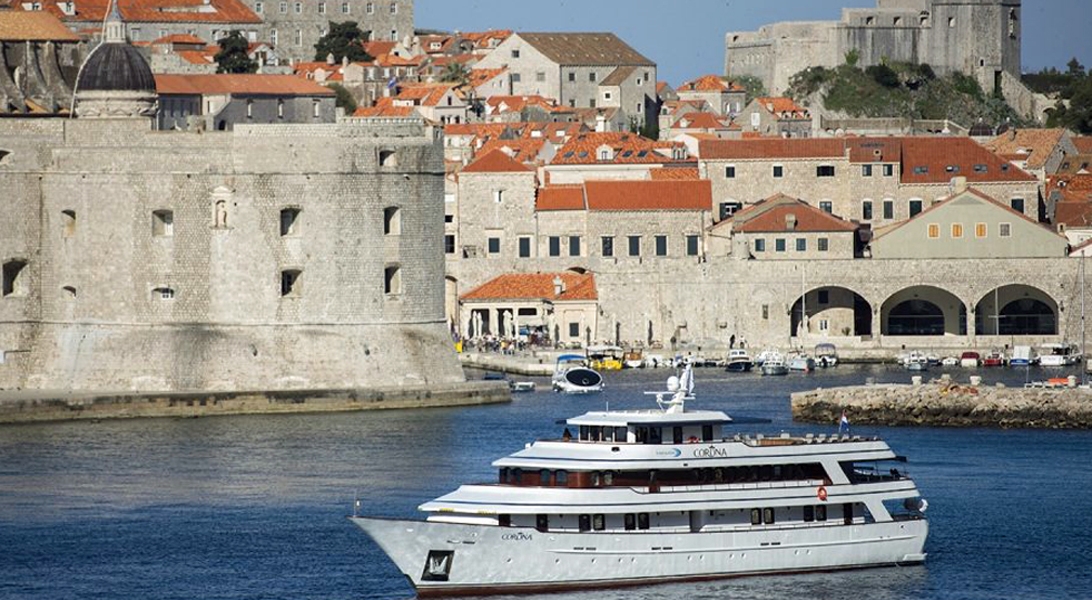




The images shown are for illustration purposes only and may not be an exact representation of what you find on the ship.
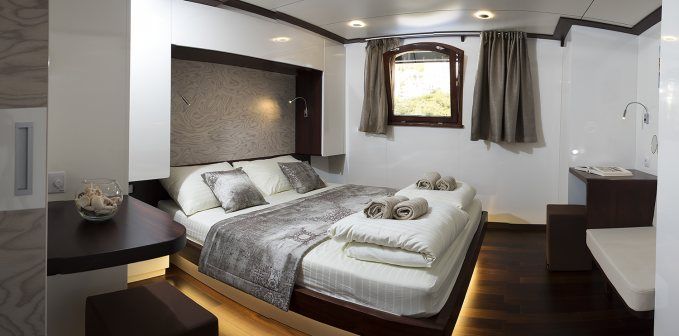
| Grade Code | From | To | |
| A | Category A (Main deck) | £2,549 | £2,549 |
| A | Category A+ (Main deck) | £2,699 | £2,699 |
Category A cabins are found on the Main Deck, are 14 square metres (151 square feet). They feature a double bed or twin beds and have two opening windows, individually controlled air-conditioning, bathroom with shower & WC, safe, hairdryer, desk and chair.
Features
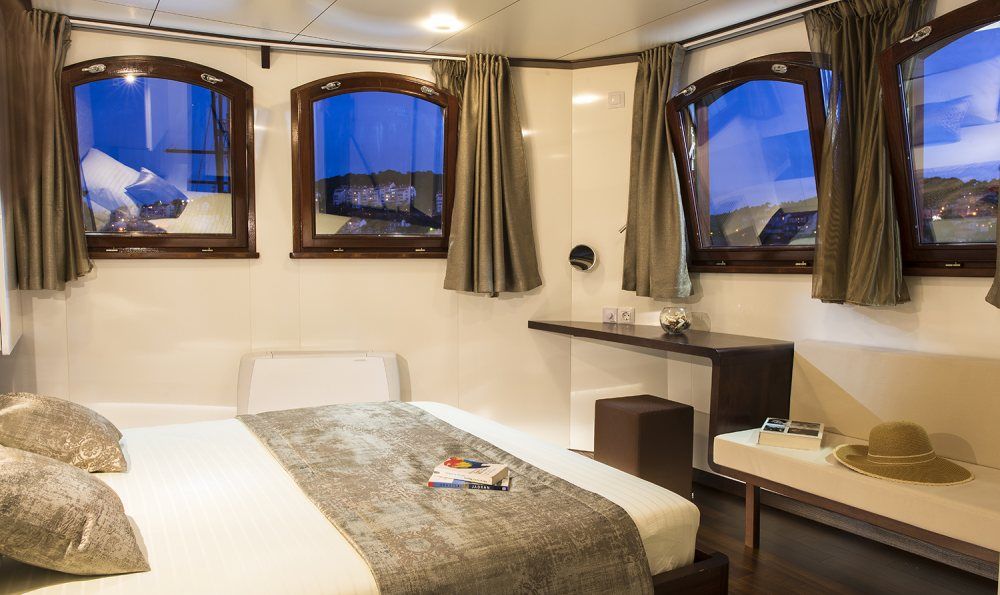
| Grade Code | From | To | |
| A+ | Category A+ (Sun deck) | £2,749 | £2,749 |
Category A+ cabins situated Salon and Sun Decks are approx 15 square metres (161 square feet), and the Category A+ cabin on the Main deck is approx 16 square metres (172 square feet). All feature a double bed and have two opening windows, individually controlled air-conditioning, a bathroom with shower & WC, safe, hairdryer, desk and chair.
Features
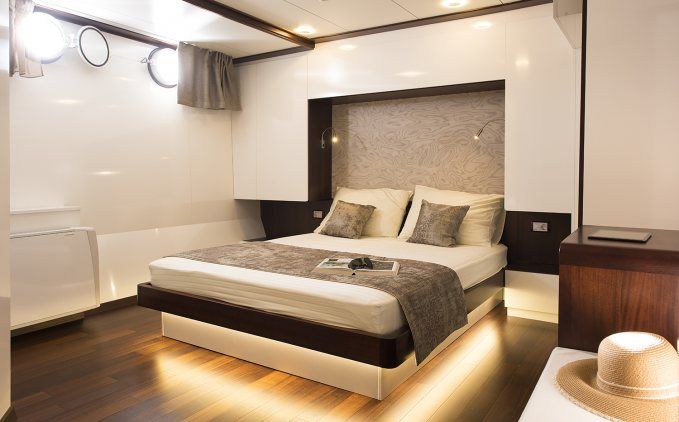
| Grade Code | From | To | |
| B | Category B (Lower deck) | £2,299 | £2,299 |
Category B cabins located on the Lower Deck are 17 square metres (183 square feet), with a double bed and have two portholes, individually controlled air-conditioning, bathroom with shower & WC, safe, hairdryer, desk and chair.
Features
The images shown are for illustration purposes only and may not be an exact representation of what you find on the ship.
The images shown are for illustration purposes only and may not be an exact representation of what you find on the ship.
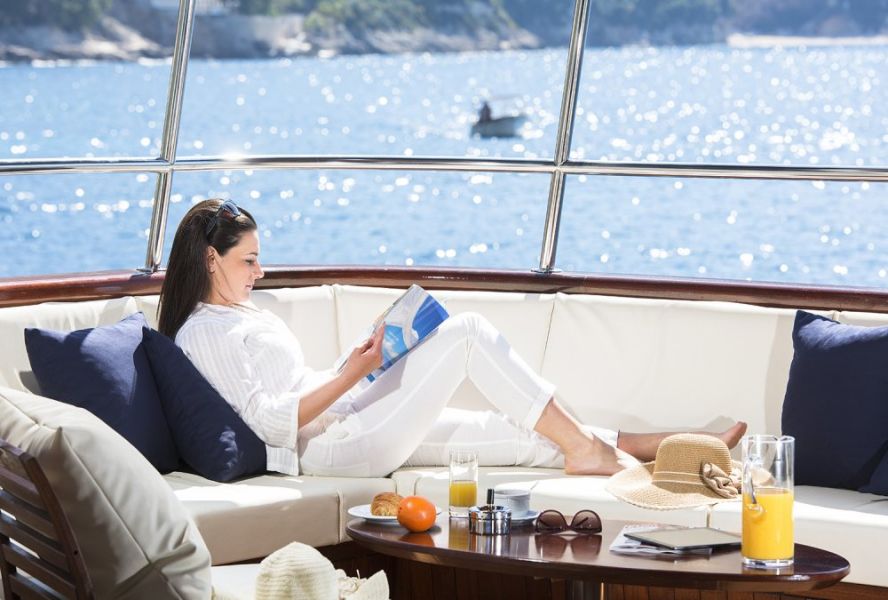
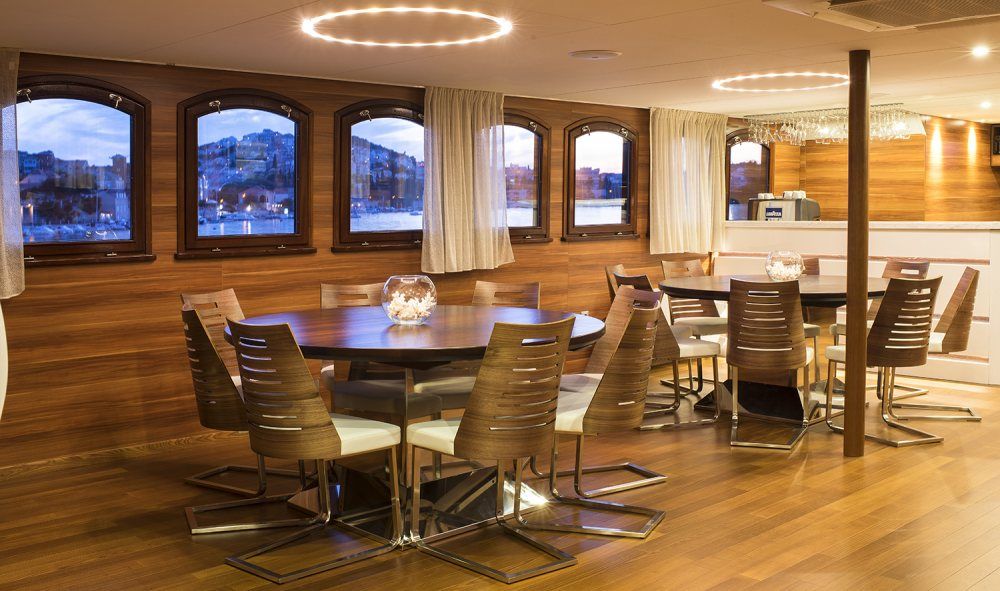
The Sun Deck up top has plenty of loungers and areas to relax, ideal to enjoy the cooling sea breezes, absorb the panoramic views and appreciate the attentive bar service
Sun Deck featuring a luxurious seating area with sun loungers and cushions
The images shown are for illustration purposes only and may not be an exact representation of what you find on the ship.
The images shown are for illustration purposes only and may not be an exact representation of what you find on the ship.
| 7 nights aboard the MV Corona | |||
| Return Flights | |||
| Return Overseas Transfers | |||
| Tours with expert guides included | |||
| Services of an experienced tour manager throughout | |||
| Complimentary tea and coffee | |||
| Complimentary Wi-Fi | |||
| Port Taxes and Fees | |||
 | ABTA and ATOL Protection* | ||
Date 17th Jul 2025 |
Nts 7 |
Please Call for Availability |
Date 17th Jul 2025 |
Nts 7 |
Please Call for Availability |
| Oceanview staterooms |  | ||
| A+ | Category A+ (Sun deck) |  | |
| B | Category B (Lower deck) |  | |
| A | Category A (Main deck) |  | |
| A | Category A+ (Main deck) |  | |
| Oceanview | |
| (All prices are £GBP per person) | |
| Thu 24th Jul 202524 Jul 25 | Please call for availability |
| Thu 7th Aug 202507 Aug 25 | 2,249 |
| Thu 7th Aug 202507 Aug 25 | 2,249 |
| Thu 7th Aug 202507 Aug 25 | 2,249 |
| Thu 21st Aug 202521 Aug 25 | Please call for availability |
| Thu 28th Aug 202528 Aug 25 | Please call for availability |
| Thu 4th Sep 202504 Sep 25 | 2,549 |
| Thu 4th Sep 202504 Sep 25 | 2,549 |
| Thu 4th Sep 202504 Sep 25 | 2,549 |
| Thu 18th Sep 202518 Sep 25 | Please call for availability |
| Thu 2nd Oct 202502 Oct 25 | Please call for availability |
Fusion Cruises when selling travel arrangements is a trading name of The Midcounties Co-operative Ltd. Fusion Cruises is an Accredited Body Member of Midcounties Co-operative Travel Consortium. (ABTA:P6652, ATOL:6053).
Book with Confidence. We are a Member of ABTA which means you have the benefit of ABTA’s assistance and Code of Conduct.
Some of the flights and flight-inclusive holidays on this website are financially protected by the ATOL scheme but ATOL protection does not apply to all holiday and travel services offered on this website. This website will provide you with information on the protection that applies in the case of each holiday and travel service offered before you make your booking. If you do not receive an ATOL Certificate then the booking will not be ATOL protected. If you do receive an ATOL Certificate but all parts of your trip are not listed on it, those parts will not be ATOL protected. Please see our booking conditions for information, or for more information about financial protection and the ATOL Certificate go to: www.caa.co.uk
